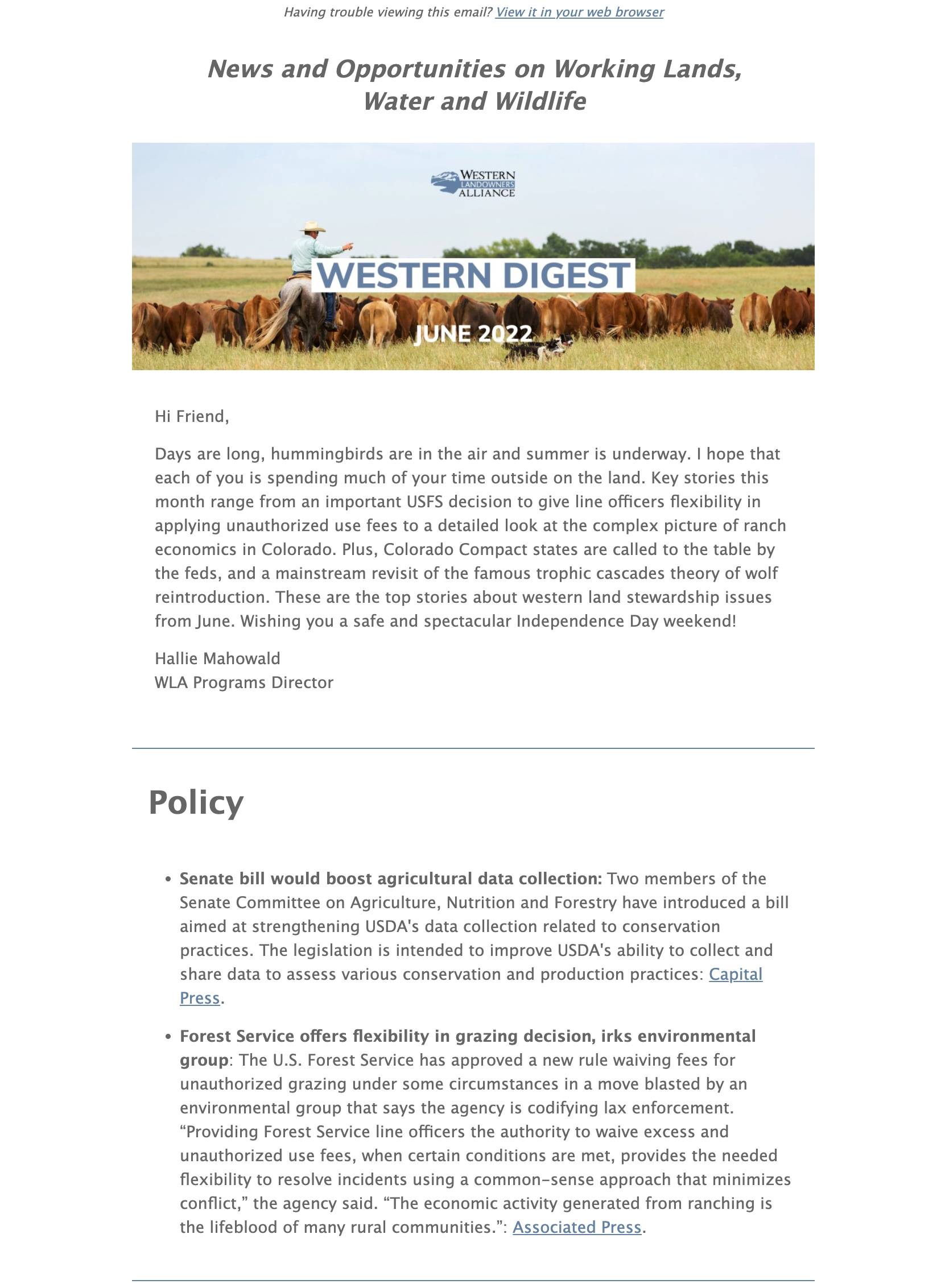Now available as a monthly email for members only
Become a Member - Get the Digest
It's important to be prepared for what's in front of you. Western Landowners Alliance keeps you up to date on the latest policies and developments for land conservation. Western Landowners Alliance members get our exclusive Western Digest monthly email with stories curated by our expert staff to provide the key insights you need to steward the West best.

Get the most important news for landowners from around the West in your inbox.
It's important to be prepared for what's in front of you. Western Landowners Alliance keeps you up to date on the latest policies and developments for land conservation. Western Landowners Alliance members get our exclusive Western Digest monthly email with stories curated by our expert staff to provide the key insights you need to steward the West best.